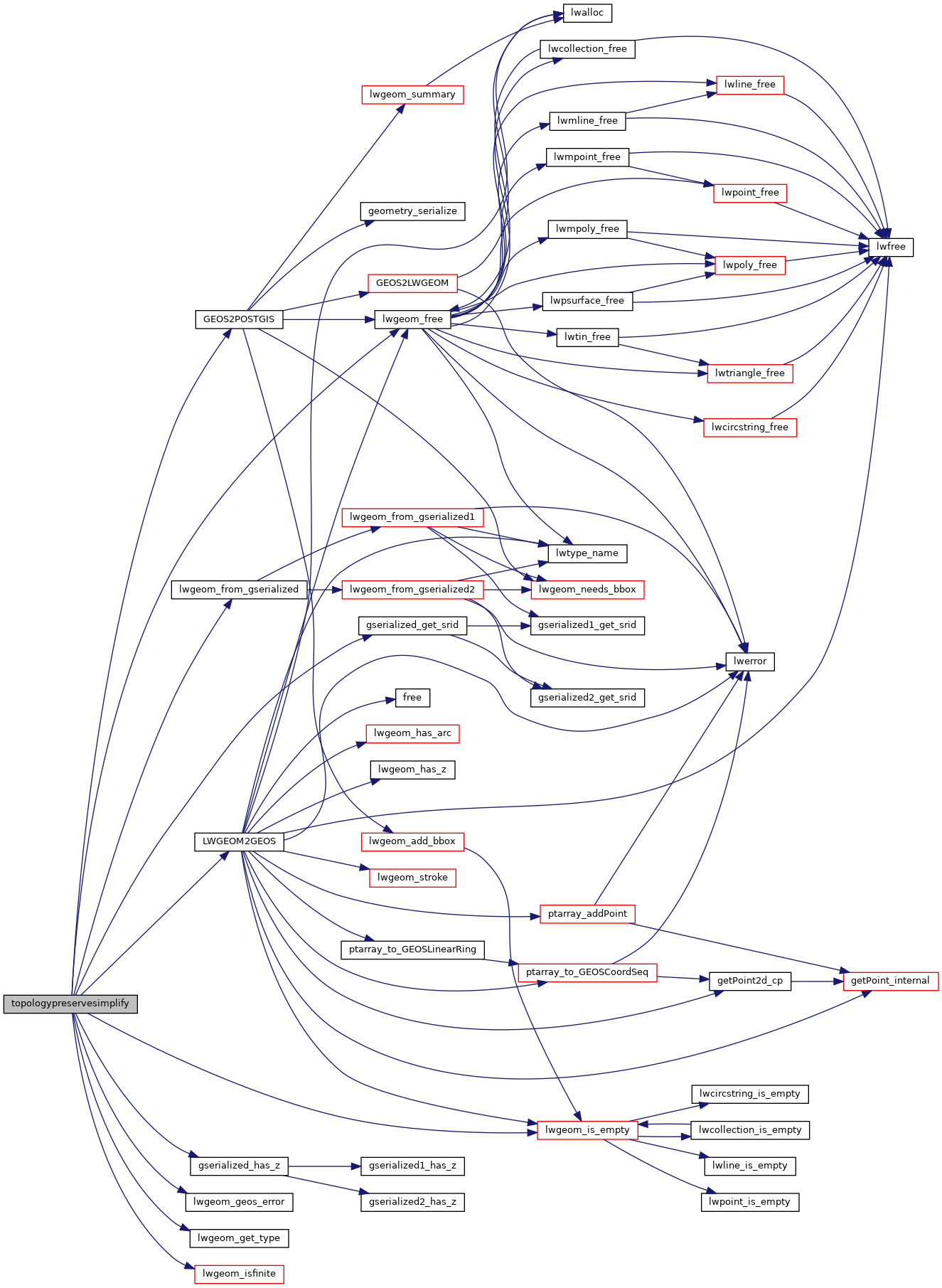◆ topologypreservesimplify()
| Datum topologypreservesimplify | ( | PG_FUNCTION_ARGS | ) |
Definition at line 832 of file postgis/lwgeom_geos.c.
877 elog(ERROR,"GEOS topologypreservesimplify() threw an error (result postgis geometry formation)!");
int32_t gserialized_get_srid(const GSERIALIZED *g)
Extract the SRID from the serialized form (it is packed into three bytes so this is a handy function)...
Definition: gserialized.c:126
LWGEOM * lwgeom_from_gserialized(const GSERIALIZED *g)
Allocate a new LWGEOM from a GSERIALIZED.
Definition: gserialized.c:239
int gserialized_has_z(const GSERIALIZED *g)
Check if a GSERIALIZED has a Z ordinate.
Definition: gserialized.c:174
GEOSGeometry * LWGEOM2GEOS(const LWGEOM *lwgeom, uint8_t autofix)
Definition: liblwgeom/lwgeom_geos.c:390
int lwgeom_isfinite(const LWGEOM *lwgeom)
Check if a LWGEOM has any non-finite (NaN or Inf) coordinates.
Definition: lwgeom.c:2529
static int lwgeom_is_empty(const LWGEOM *geom)
Return true or false depending on whether a geometry is an "empty" geometry (no vertices members)
Definition: lwinline.h:193
GSERIALIZED * GEOS2POSTGIS(GEOSGeom geom, char want3d)
Definition: postgis/lwgeom_geos.c:2660
Definition: liblwgeom.h:429
Definition: liblwgeom.h:443
References GEOS2POSTGIS(), gserialized_get_srid(), gserialized_has_z(), HANDLE_GEOS_ERROR, LW_TRUE, LWGEOM2GEOS(), lwgeom_free(), lwgeom_from_gserialized(), lwgeom_geos_error(), lwgeom_get_type(), lwgeom_is_empty(), lwgeom_isfinite(), TINTYPE, TRIANGLETYPE, and ovdump::type.
Here is the call graph for this function:
